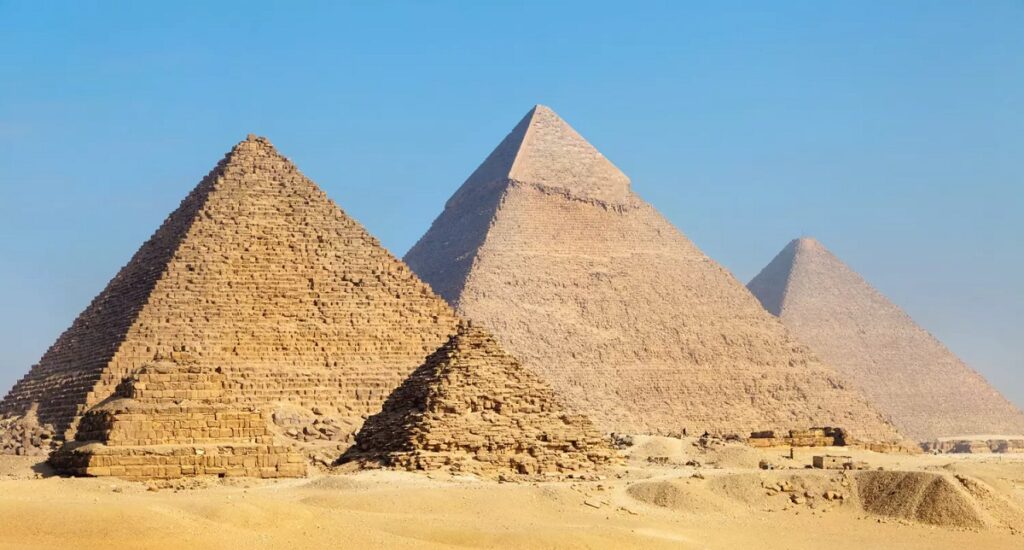The Giza Pyramids, iconic symbols of ancient Egyptian civilization, have intrigued humanity for thousands of years. A central question has persisted: how did the Egyptians manage to transport the massive stones—each tipping the scales at 2,500 kilograms—to their construction sites? After years of speculation involving everything from ancient ramps to theories of extraterrestrial assistance, a team of international researchers has revealed a surprisingly straightforward solution to this age-old conundrum.
How Did the Egyptians Move the Massive Stones?
The Giza Pyramids, revered as some of the oldest and most impressive man-made structures, were probably built around 4,500 years ago. The lingering question has always been: how did these ancient Egyptians transport approximately 2.3 million stone blocks, each weighing as much as a small car? Without modern equipment like cranes or trucks, how could such an extraordinary feat be achieved?
A collaborative team of researchers from France, China, and Egypt has released a study providing insights into how these enormous stones were likely transported. Interestingly, the solution lies in a historical waterway, part of the ancient Nile River system.
The Key to the Mystery: An Ancient River
The pivotal discovery relates to an overlooked branch of the Nile River, known as the Khufu branch, which no longer exists but played a crucial role during the pyramid construction era. This ancient watercourse allowed the Egyptians to efficiently transport heavy stone blocks by loading them onto boats and floating them directly to the construction site.
How did these researchers stumble upon this lost river? The breakthrough came from unexpected evidence: fossilized pollen grains uncovered in the soil surrounding the pyramids. These minute remnants hinted at the existence of flowering grasses that once thrived along the banks of a river, confirming that a sizable watercourse—the Khufu branch—flowed near the pyramids and served as a natural transit route for the hefty stones.
An Ancient Water Highway
With this river system at their disposal, the Egyptians could use boats to transport stones along the Nile and its tributary, the Khufu branch, straight to the Giza construction site. It’s almost as if they boasted an ancient water highway for moving materials. This finding implies that the Egyptians harnessed the river’s power, rather than relying solely on manual labor or intricate pulley systems, to effectively move these massive stones.
Environmental geographer Harder Sheisha pointed out that without this waterway, the construction of the pyramids would have been impossible. The significance of the Nile and its branches in the building process is now clearer than ever, underscoring the notion that the ancient Egyptians expertly utilized their environment.
The Next Puzzle: How Did They Lift the Stones?
While the discovery of the Khufu branch sheds light on transporting the stones, another question emerges: how did they lift these massive blocks to the heights of the pyramids? It’s improbable that they had access to modern cranes or heavy lifting machines back in 2500 BCE.
This question continues to ignite curiosity among archaeologists, as the method employed to elevate these colossal blocks—some over 150 meters high—remains unsolved. Although some have proposed ramps or other inventive engineering methods, the absence of conclusive evidence keeps the mystery alive, captivating historians and enthusiasts alike.
A Breakthrough in Egyptology
This recent revelation has accomplished more than just solving one part of the puzzle; it illustrates how ancient societies like Egypt innovatively leveraged their natural resources in ways we often overlook. The finding emphasizes the inventive spirit of the Egyptians, who clearly possessed a deep understanding of their landscape and aimed to achieve seemingly impossible goals.
While we may not have the complete picture just yet, this breakthrough adds an exhilarating chapter to our understanding of how the Giza Pyramids were built. Thanks to fossilized pollen and the perseverance of researchers, we’re beginning to unravel the methods of one of history’s most advanced civilizations, bringing us closer to uncovering the secrets behind Egypt’s most magnificent wonders.







